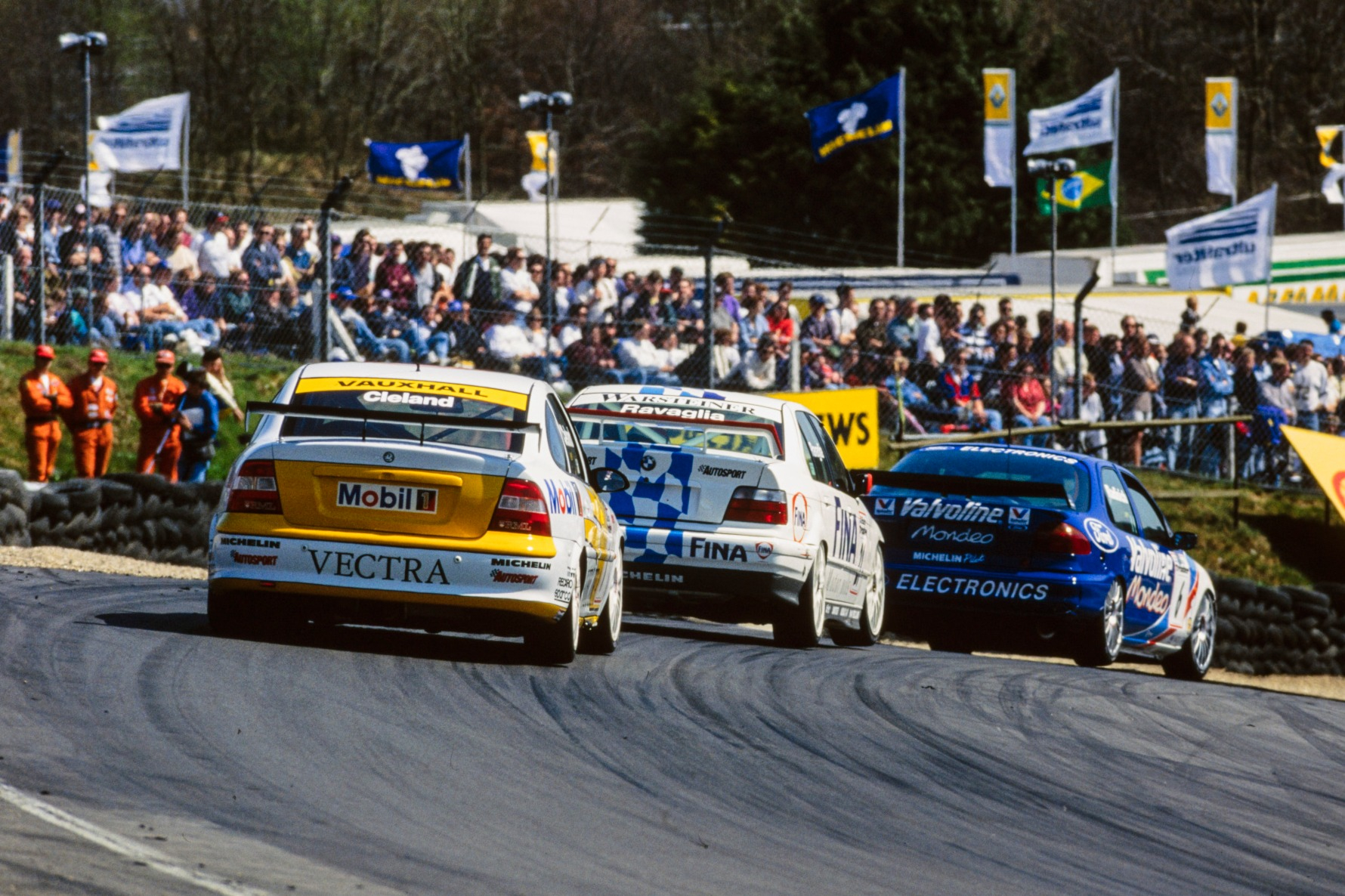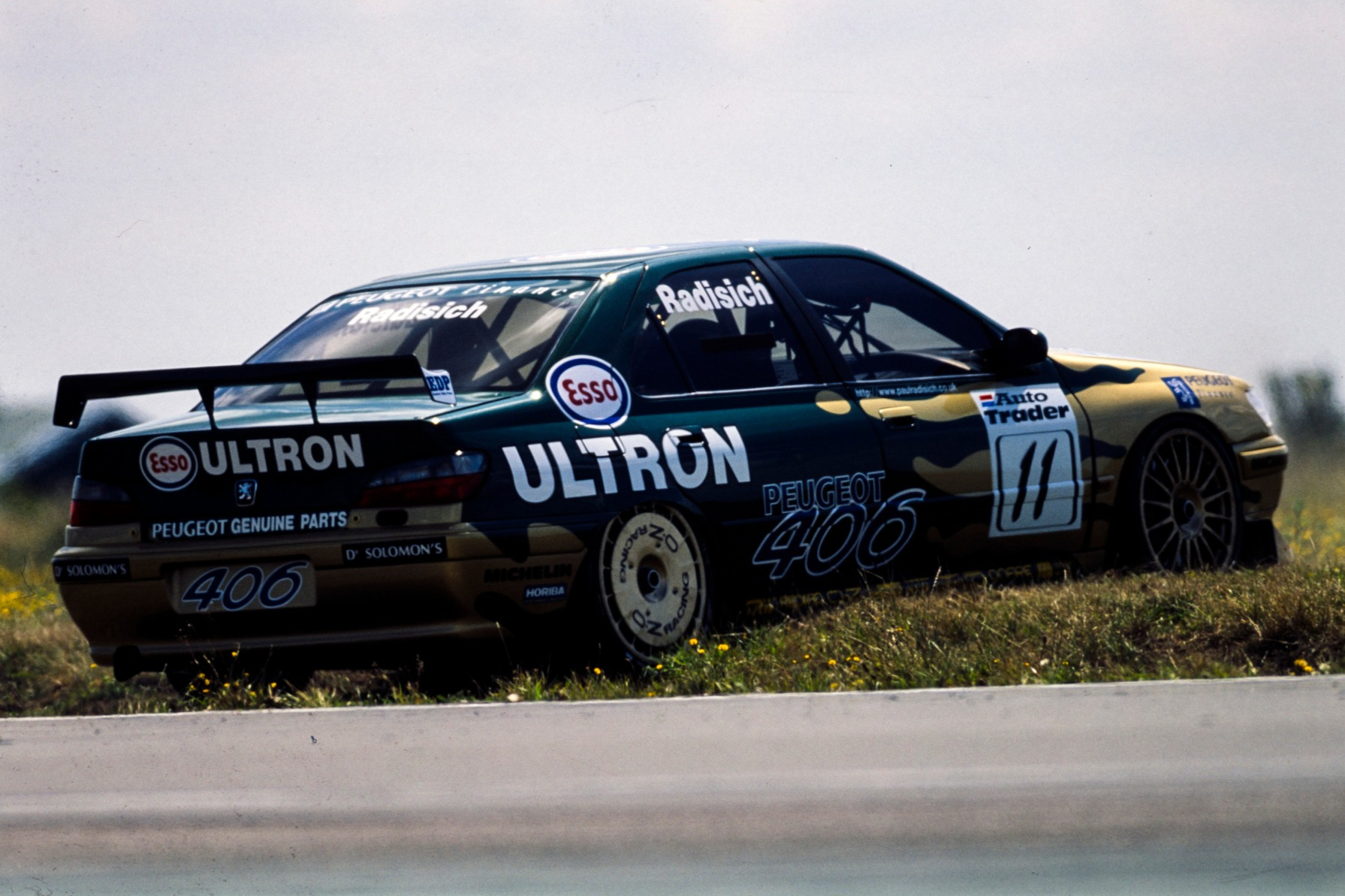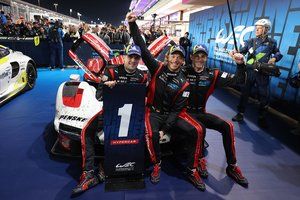Archive: The World Cup winner left floundering by Ford's BTCC nadir
Ford burst onto the Super Touring scene in 1993, Paul Radisich finishing third in the British Touring Car Championship despite missing the first six rounds. But 25 years ago, the Kiwi's loyalty was severely tested by the Blue Oval's mid-90s dip, as he revealed to Autosport in the 19 September 1996 issue

If Damon Hill wins the Formula 1 world championship this season, he shouldn't get too carried away. If he does, he may find himself given a little nudge by a diminutive New Zealander. For it is 10 seasons since the Kiwi in question - Paul Radisich - partnered Hill in Murray Taylor Racing's British Formula 3 championship team. And it was just seven years later, in 1993, that the new 33-year-old from Auckland scooped his first FIA world title.
That one-off dash at Monza for Super Touring's big prize was repeated the following season at Donington Park, when Radisich triumphed again for Ford. But since then, his and the Mondeo's form have slumped; in two years, Radisich has won just one race, and that was 16 months ago.
If the turn in fortunes bothers him, he doesn't let it show. Radisich is renowned as one of the most easy-going, softly-spoken figures in the British Touring Car Championship. Besides, he's twice been on the scrapheap. His F3 career floundered through lack of finance, and then the 1988 American Formula Super Vee title - a potential route into Indycars - went begging due to his poor oval-track form. With a new three-year Ford contract waiting to be signed, things are looking pretty cushy compared to the old days.
"It's the first year that we've not had a chance at winning races and that's a bitter pill to swallow," he recognises. "But as far as motivation is concerned, you've got to look to each race individually and say, 'Hey, I've got to do the best I possibly can.'
"It's a different type of motivation when you're at the top. It just comes - you don't have to talk to yourself and give yourself reminders all the time. When you're at the back end of the grid, you keep having to reassure yourself that things will get better."

Paul Radisich brings up the rear as the BTCC field roars into Allard, Thruxton 1996
Photo by: Motorsport Images
And thinking of the silverware glistening on the Radisich sideboard probably helps, one would imagine.
"That's why when success comes to you, you have to take advantage of it, because the day after it's gone," he claims. "I don't go to Donington and say, 'Hey, I won the World Cup here'. I don't look back and say, 'I was fast here last year and this time I'm not'.
"It's just that the development of the other competitors has trebled while ours has been nil. They've not only crept up to where we were, but they've left us in the distance. Ford's dropped the ball, and everyone else has picked it up and booted it up into the air."
"The team has been making very small changes to improve it, but other teams are developing all the time and, with the heavy schedule of the BTCC, there's hardly time to test properly" Paul Radisich
Not helped, of course, by the extremely late decision from Ford last winter finally to ditch Andy Rouse's Rouse Sport organisation, which had nurtured the Mondeo programme since its birth, in favour of legendary Formula 3 team West Surrey Racing.
"The whole thing has had an effect," Radisich acknowledges. "Because there's been so much deliberation over everything, it slowed down the development and the progress of the Mondeo and we're feeling the effects right now.
"West Surrey are going through a very big learning curve, and it's unfortunate that the cars (built this year by German firm Schubel) have been uncompetitive. The team has been making very small changes to improve it, but other teams are developing all the time and, with the heavy schedule of the BTCC, there's hardly time to test properly."
So why hasn't there been a development programme? Is it lack of a sufficient budget?
"It starts with the structure, and the structure hasn't been there this year," Radisich explains. "Sure, if there were more money there could have been a separate car where you could try different things and make it go faster, then what's learned there could be transferred to the race cars."

Paul Radisich attacks the kerbs at Brands Hatch, BTCC 1996
Photo by: Motorsport Images
But that hasn't been the case, and Radisich has been consigned to a season spent in the hurly-burly of the BTCC midfield. As a consequence, West Surrey Racing may not have been able to complete much development, but at least it's had plenty of panel-bashing practice.
"In the races I just get my head down and do the best I can. The downside to being in the middle of the pack is that you inevitably want to go forward, and you try to take unnecessary risks to move up a couple of places. Sometimes it'll work nice and cleanly and other times it won't. That's the problem with starting in the middle of the field, because I'm a prime candidate for not making it round!
"In the pack, everyone has everything to go for, and nothing to lose. There are more incidents and more chances of things happening, because you're all vying for one spot on the road."
It's a predicament a driver can easily find himself in, too, for Radisich believes that any one of eight men can win the championship in the right equipment. But equally, they could struggle if the machinery lottery wasn't so kind.
"If you put the top eight drivers in one particular car, then with a bit of practice we'd all be pretty similar," he says. "Everybody in their own right is a stand-out - the best drivers can drive anything quickly and it just comes down to that little edge."
Bearing that in mind, it's interesting to hear some of the rumoured salary figures being bandied around the paddock. Radisich, it is rumoured, asked for £1.5 million from Ford for his commitment to the next three years. But he refuses to be drawn on specifics and won't admit to being top of the BTCC's salary league table.
He smiles: "Ford looks after me extremely well, but I don't think I'm the highest paid. I'm a humble person and I just take whatever's there."

Paul Radisich and Ford team-mate Steve Robertson clash in the 1996 BTCC Donington opener
Photo by: Motorsport Images
Which, at one stage, looked as though it might be a drive with Mercedes in the high-tech International Touring Car Championship.
"Norbert Haug (the Mercedes sports chief) just told me to come and say hello to the team and get shown around the cars when they were at Silverstone," Radisich says. "They're fantastic looking cars and everyone wants to get involved, but the downside is that no one's too sure how long that series is going to last."
"Our faith is in Reynard and its ability to produce a good chassis. If that comes out of the box well, that'll make my job a lot easier"Paul Radisich
Instead, it looks like a deal will be done with Ford to race the new Reynard-built Mondeo: "I'm getting very close to finalising a deal with them. Sure, I've looked around and had other offers, but I've had very strong ties with them. The light at the end of the tunnel looks good for next season; things are progressing well."
Ah yes. Light at the end of the tunnel. It looks dazzlingly bright in fact, given that chassis built in Reynard's Bicester base have won on their debuts in Formula 3, Formula 3000, Indycars and the North American Touring Car Championship (with the Reynard-built Dodge Stratus).
"I'm not looking through rose-coloured glasses because the programmes's going to be late, but our faith is in Reynard and its ability to produce a good chassis," he says. "If that comes out of the box well, that'll make my job a lot easier. But anyway, it's all very well winning the first race of 1997 - I'd like to be winning the last race too."

Paul Radisich is chased into Paddock Hill Bend by Roberto Ravaglia's BMW and John Cleland's Vauxhall, Brands Hatch 1996
Photo by: Motorsport Images
What happened next?
After Ford finished equal bottom with Peugeot in the manufacturers standings in 1996, the only way was up for 1997. Radisich duly signed on the dotted line, but the hoped-for light at the end of the tunnel proved more of a mirage. Reynard's remarkable record of winning on debut in other categories was not translated to the BTCC, neither Radisich or team-mate Will Hoy reaching the podium all season as the cars were again delivered late, without sufficient spares to conduct a meaningful test programme.
The Kiwi's fourth place at Brands Hatch would prove the Reynard-built Mondeo's best result of 1997, although Ford at least finished clear of last-placed Vauxhall.
Ford would end the Super Touring era on a high with Prodrive's arrival for 1999, but by then Radisich had already seen enough. For a last roll of the dice, he had joined Peugeot for 1998, but it proved a grave error of judgement as the MSD-run 406s were plagued with engine unreliability and poor performance, leaving Radisich and Tim Harvey little chance of scoring well.
Again, fourth from Radisich in a wet-dry race at Silverstone was the outfit's best finish, but the result was completely overshadowed by Hoy taking Ford's first win since 1995 and WSR's first victory in touring cars.
He returned Down Under to the V8 Supercars championship with Dick Johnson Racing for 1999 and rediscovered winning ways the following year as he finished fourth in the standings.
Two huge accidents at the Bathurst 1000 - in 2006 and 2008 - effectively ended his career, but at the age of 58 Radisich returned for the inaugural TCR New Zealand championship earlier this year, managing a best finish of fifth in his three race outings at Highlands Motorsport Park.

Paul Radisich's Peugeot 406 stranded at Snetterton in 1998
Photo by: Motorsport Images
Be part of the Autosport community
Join the conversationShare Or Save This Story
Subscribe and access Autosport.com with your ad-blocker.
From Formula 1 to MotoGP we report straight from the paddock because we love our sport, just like you. In order to keep delivering our expert journalism, our website uses advertising. Still, we want to give you the opportunity to enjoy an ad-free and tracker-free website and to continue using your adblocker.















Top Comments